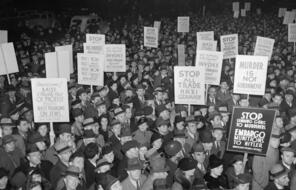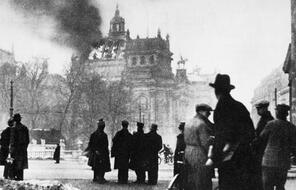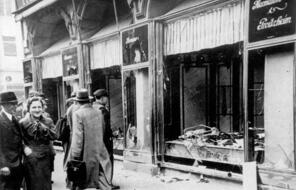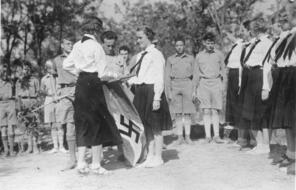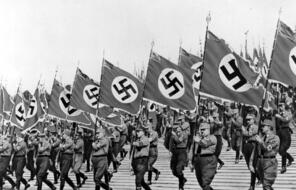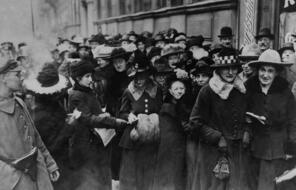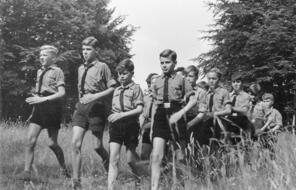Violence in the Streets
Subject
- History
Language
English — USUpdated
Throughout the years of the Weimar Republic, dozens of political parties competed for the support of German citizens. In some elections for the Reichstag, ballots listed more than 30 parties to choose from. By the mid-1920s, many of those parties were supported by paramilitary groups, or private armies. As a result, political disagreements and arguments on the streets of Germany often turned violent. Historian Richard Evans writes about the constant clashes between rival paramilitaries in the Weimar Republic:
Even in the relatively stable years of 1924–9, it was claimed that 29 Nazi activists had been killed by Communists, while the Communists themselves reported that 92 “workers” had been killed in clashes with “fascists” [Nazis] from 1924 to 1930. Twenty-six members of the Steel Helmets [conservative paramilitary group] were said to have fallen in the fight against Communism and 18 members of the Reichsbanner [Social Democrats] in various incidents of political violence from 1924 to 1928. These were only the most serious consequences of the continual fighting between rival paramilitary groups; the same sources counted injuries sustained in the battles in the thousands, many of them more serious than mere bruises or broken bones. 1
The numbers of deaths and injuries in clashes between paramilitaries continued to rise through 1932. As the Nazi paramilitary organization, the SA (storm troopers), marched through the streets of Berlin in 1928 and later, they chanted the popular “Song of the Storm Columns”:
We are the Storm Columns, we put ourselves about,
We are the foremost ranks, courageous in a fight.
With sweating brows from work, our stomachs without food!
Our calloused, sooty hands our rifles firmly hold.
So stand the Storm Columns, for racial fight prepared.
Only when Jews bleed, are we liberated.
No more negotiation; it’s no help, not even slight:
Beside our Adolf Hitler we’re courageous in a fight.
Long live our Adolf Hitler! We're already marching on.
We're storming in the name of German revolution.
Leap onto the barricades! Defeat us only death can.
We’re Storm Columns of Hitler’s dictatorship of one man. 2
Connection Questions
- What effect does an atmosphere of violence have on a democracy? How might a democratic society respond to violence in the name of politics?
- What values are reflected in “Song of the Storm Columns”?
- 1Richard J. Evans, The Coming of the Third Reich (New York: Penguin, 2003), 269. Reproduced by permission from Penguin Random House UK and Penguin Press.
- 2Richard J. Evans, The Coming of the Third Reich (New York: Penguin, 2003), 269. Reproduced by permission from Penguin Random House UK and Penguin Press.
How to Cite This Reading
Facing History & Ourselves, “Violence in the Streets”, last updated August 2, 2016.

